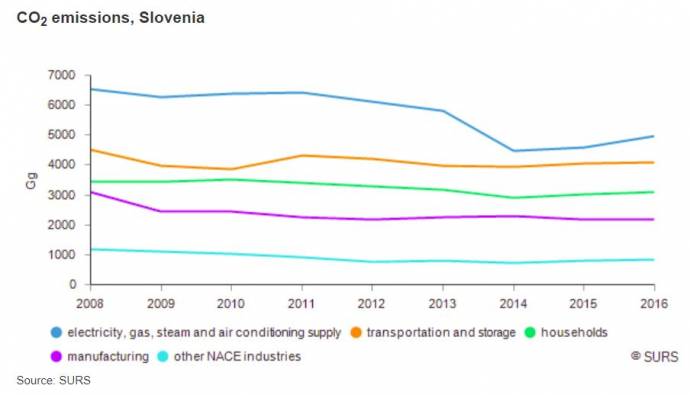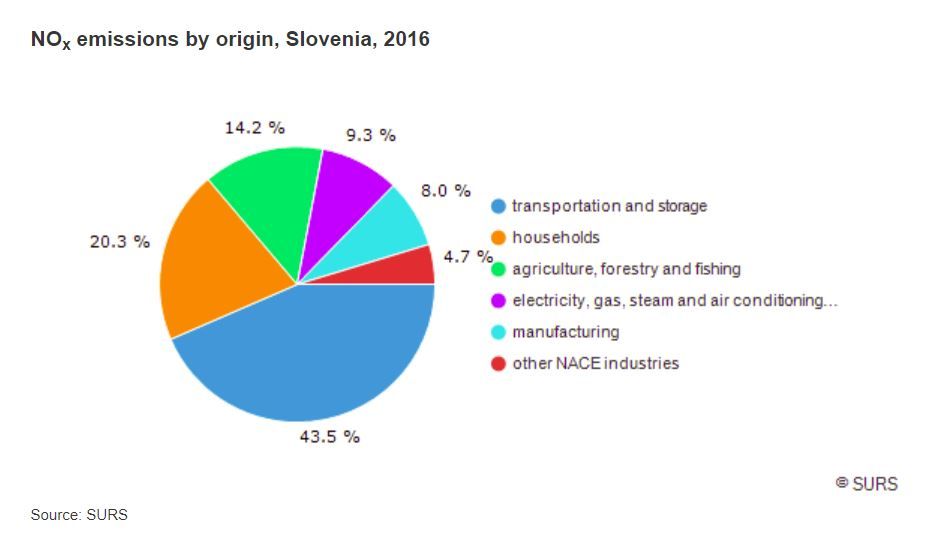The amount of CO2 emissions generated was 3.8% higher than in 2015. The production and services sectors generated 4.2% and households 2.5% more emissions than in 2015.
Compared to 2008, CO2 emissions were down by 19.1%. They were down by 21.2% in production and services and by 10% in households.
The biggest generator of CO2 emissions in 2016 was the electricity, gas and steam supply sector (32.7%), followed by transports and storage (26.9%) and households (20.5%).
Nitrogen oxide emissions meanwhile increased by 4.5%, from 41,200 to 43,000 tonnes. Transport and storage contributed the most (43.5%), followed by agriculture, hunting, forestry and fisheries at 14.2% and electricity, gas and steam supply at 9.3%.
Households generated 20.3% of all nitrogen oxide emissions.
In 2016, Slovenia also generated 14,000 tonnes of PM10 particles, which is 2.8% more than the year before. The largest polluter was households, generating 72.1% of total emissions, mostly with heating and cooling (65.2% of total emissions).
Manufacturing contributed 9.8% to total emissions, transport and storage 7.5% and agriculture, hunting, forestry and fisheries 5.2%.
The only two substances whose emissions decreased in 2016 compared to 2015 were sulphur dioxide and sulphur hexafluoride, dropping by 11% and 0.3%, respectively.
Up the most were the emissions of perfluorinated hydrocarbon (by 25.7%) and nitrogen oxide
More detailed data can be found here.








